Since our center was founded in 1990, CSERC has made it a priority to work to save wild places, rare wildlife, and precious water resources. Old growth trees have been one of the most threatened parts of nature’s web of life in our local region, and CSERC has consistently fought to preserve them and their pivotal role in the forest.
Even in recent years, timber industry and some Forest Service officials have dismissed the need to protect large, old conifers by calling them “decadent” or “over-mature” as if trees are simply a crop to be harvested. In a natural forest ecosystem, large conifers and hardwoods can grow to be centuries old. Above and beyond the extremely high scenic value and recreational enjoyment they provide for forest visitors, why do old growth trees matter for wildlife?
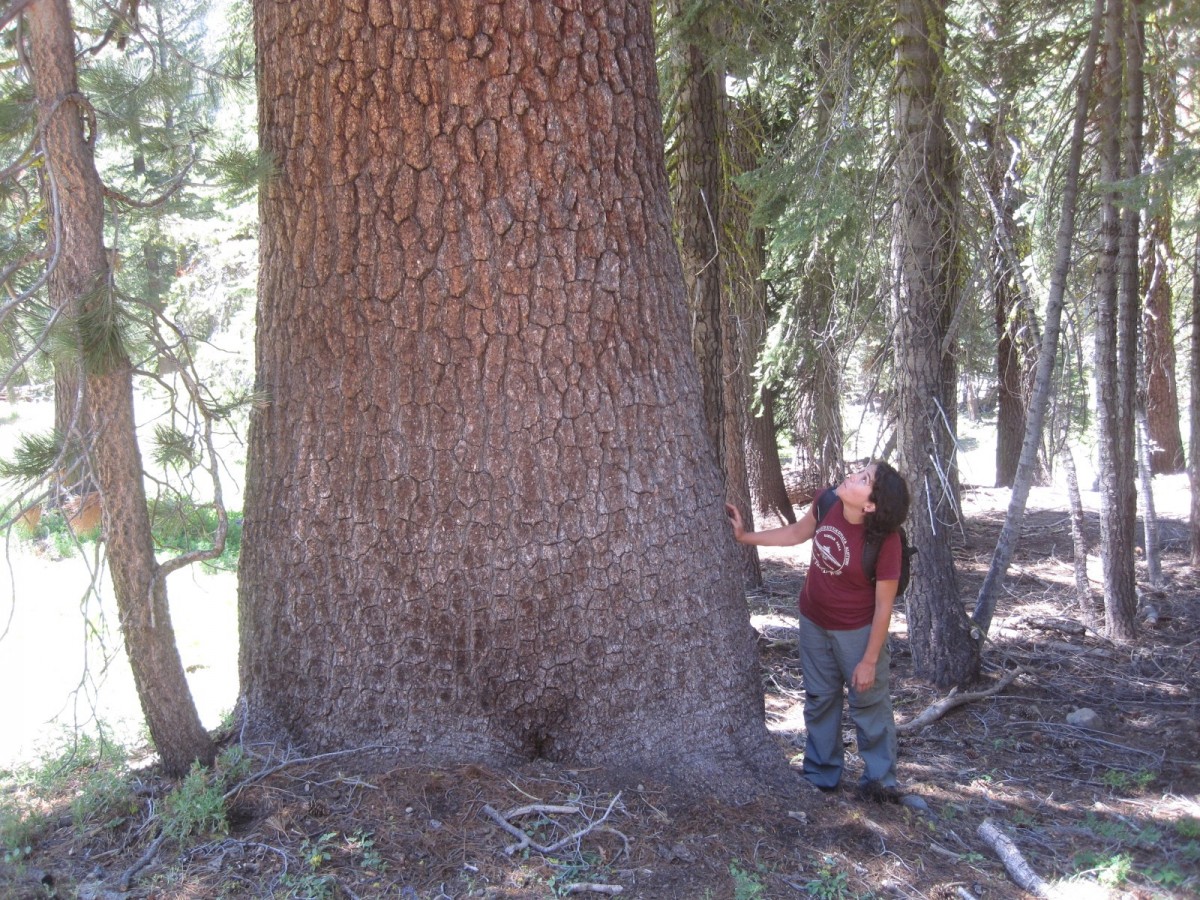
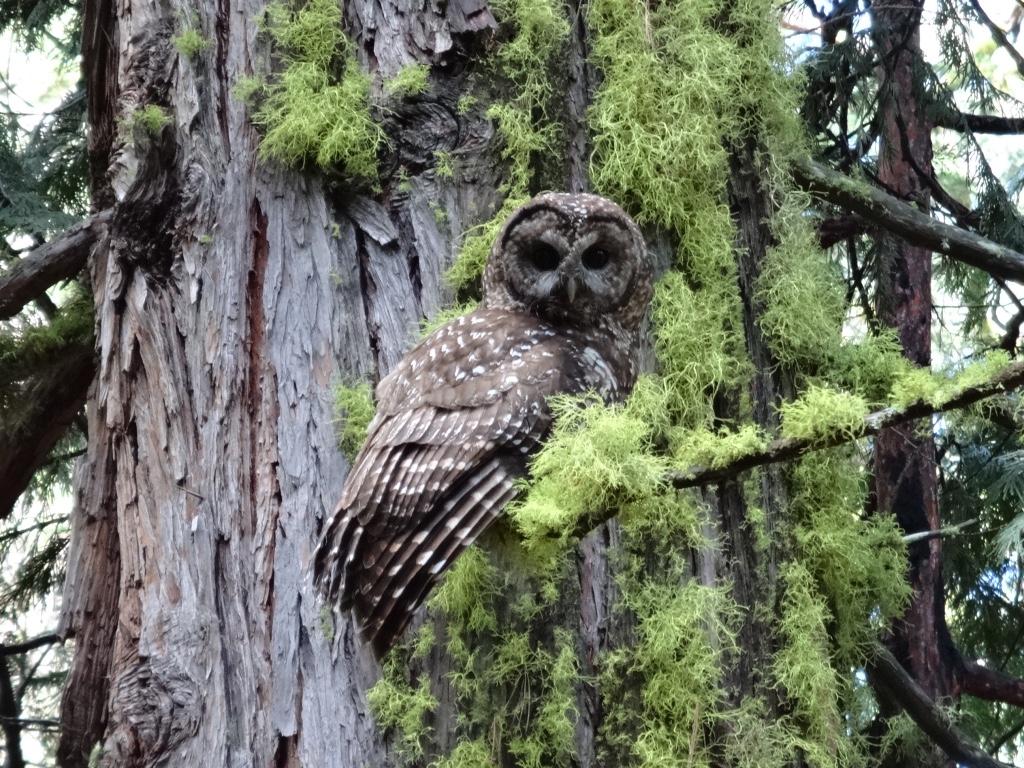
Obviously, trees grow larger the longer they live, and the larger a pine or fir or cedar becomes, the taller, bigger, and more important it becomes for its microhabitat. As green trees, giant old conifers provide cool shade, multi-layered canopy, and the ability for fledgling owls (for example) to climb back and forth between lower and upper branches depending on how hot or how cool the temperatures may be at the time.
When big branches get torn out of the side of the trunk due to winter snowloads or strong winds, the cavities left in the trunk of the tree become apartment houses for martens, owls, and other cavity-dwelling species. Broken tops in very large, old trees may produce ideal platform locations for the nests of goshawks or eagles.
And when centuries-old trees eventually die, the dead trees may stand for decades as snags that increasing rot and create small openings that become their own apartment houses for squirrels, chipmunks, birds, and other wildlife. Eventually, those large snags fall to the ground to provide housing and shelter for salamanders, lizards, and centipedes. As the centers of the down logs decay, they can provide dens for foxes or bobcats or fishers. Over literally centuries of growth and decay, old growth trees provide unique and essential habitat value for the wildlife.
Sadly, since the West was settled by pioneers and gold seekers, cutting the biggest trees has been highly profitable for those producing wood products. Even on national forest lands, public forest officials routinely planned clearcut logging projects in the heart of old growth groves for decade after decade. Only when CSERC and other environmental groups fought back with appeals and lawsuits did the Forest Service FINALLY start protecting old growth trees in the mid-1990s. And ever since that protection went into place, timber industry and associated political interests have pushed to allow more and more logging of large, old trees.
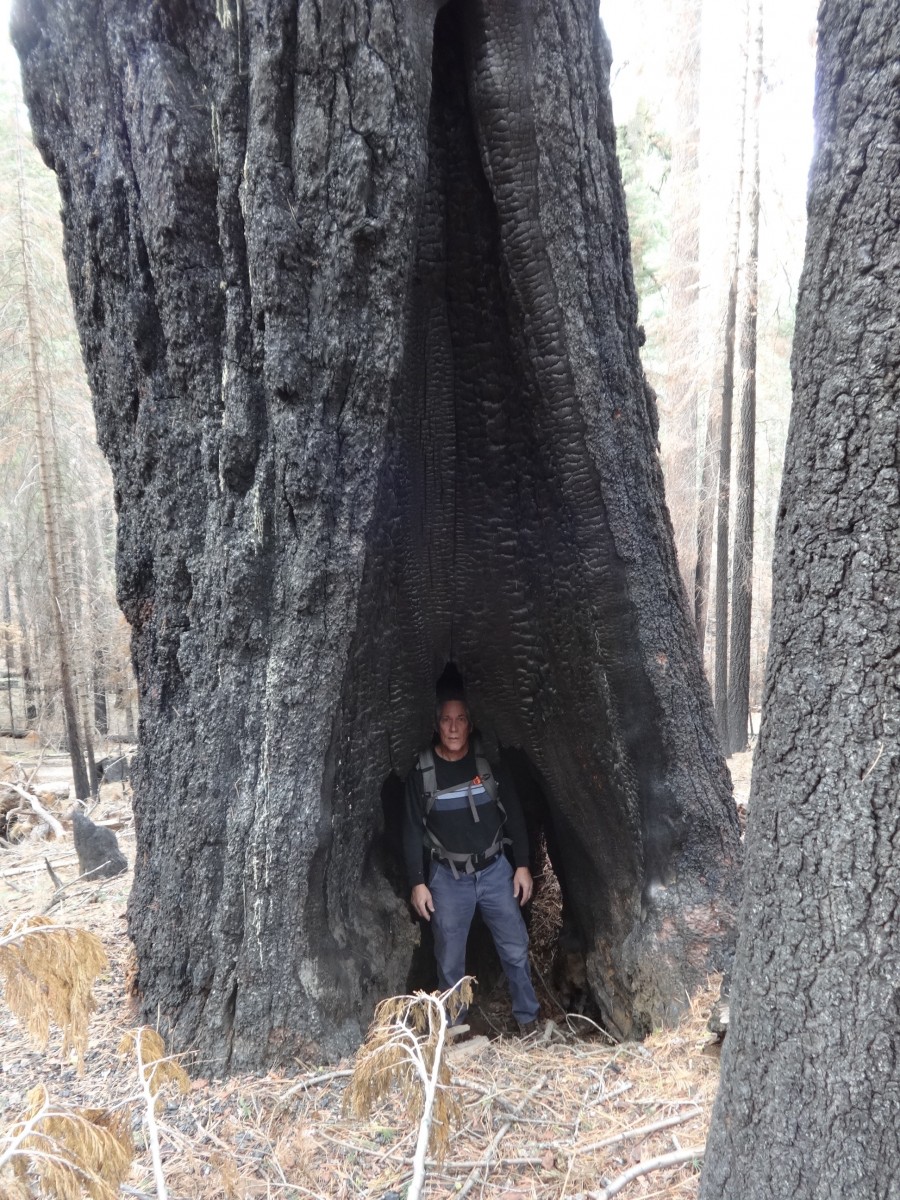
SOME GREAT EXAMPLES OF CSERC SAVING OLD GROWTH TREES
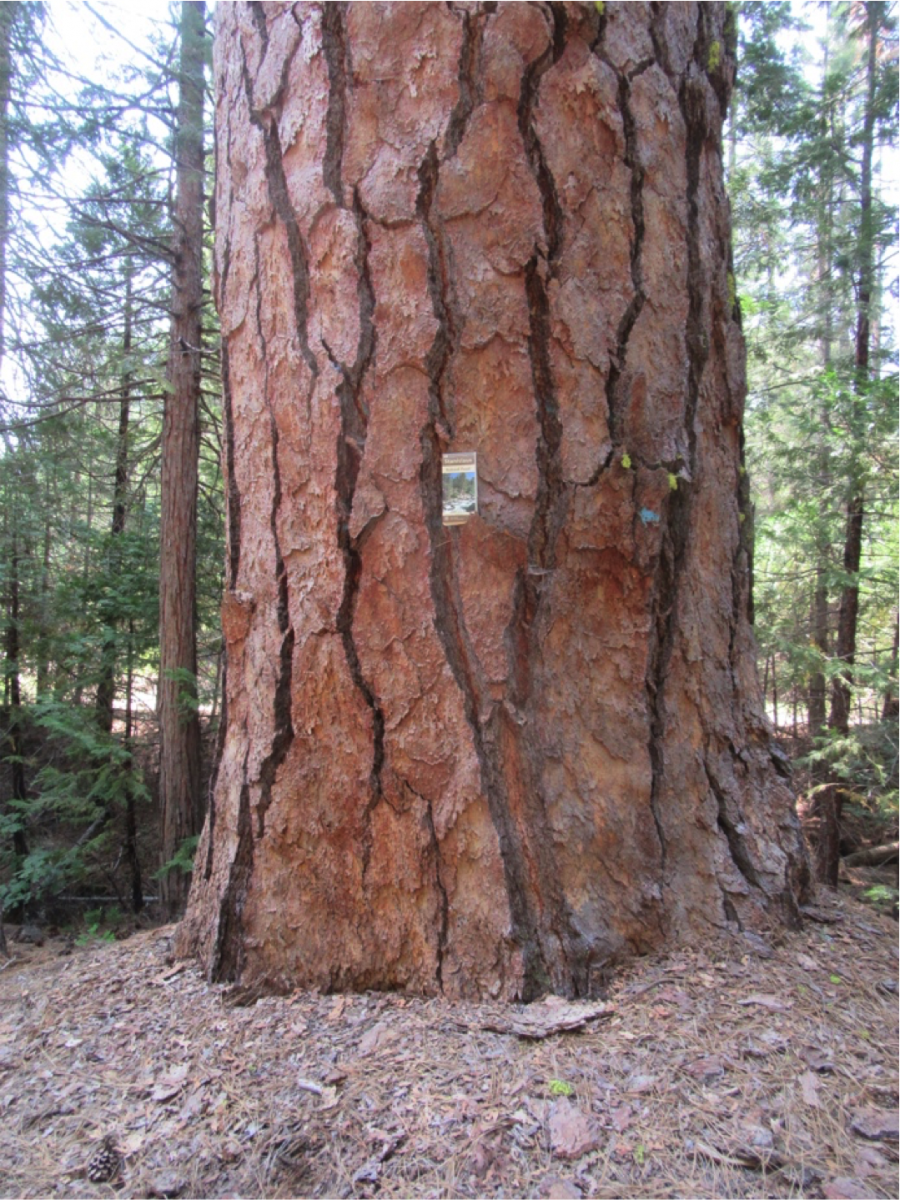
CSERC pushed back on logging projects until a size limit was adopted to protect older trees
In the early years after CSERC formed, our staff successfully delayed many Forest Service logging projects that aimed to clearcut forest stands that included large numbers of old growth trees. This photo at left shows just one of the giant pines that still has blue paint on its bark where it was marked for logging before CSERC prevailed to halt the project. New policies then were adopted that blocked the cutting of trees over 30” in diameter except for ecological or safety purposes.
CSERC monitoring finds where old growth trees are wrongly marked to be logged
Just two years ago, CSERC’s fieldwork located many old growth conifers along a stream corridor that had been marked for logging. We knew that due to CSERC involvement, the original Forest Service plan to allow trees 40-50” in diameter to be cut had been changed – and only trees under 40” could be cut in this aspen restoration project area.
CSERC staff documented with photos all of the trees that were illegally marked and that would be logged unless we could get the agency to “black out” the blue paint that identified the trees as allowable for cutting. This summer, CSERC staff re-visited the site and found that after our repeated requests to fix the problem, Forest employees had gotten out to the site and had taken the steps needed to black out the blue paint and save the big trees from being cut. The photo below shows one of the trees that was marked blue to designate for cutting two years ago, and at the same site just one of the many trees now spared (and the blue line painted over) due to CSERC watchdog efforts.
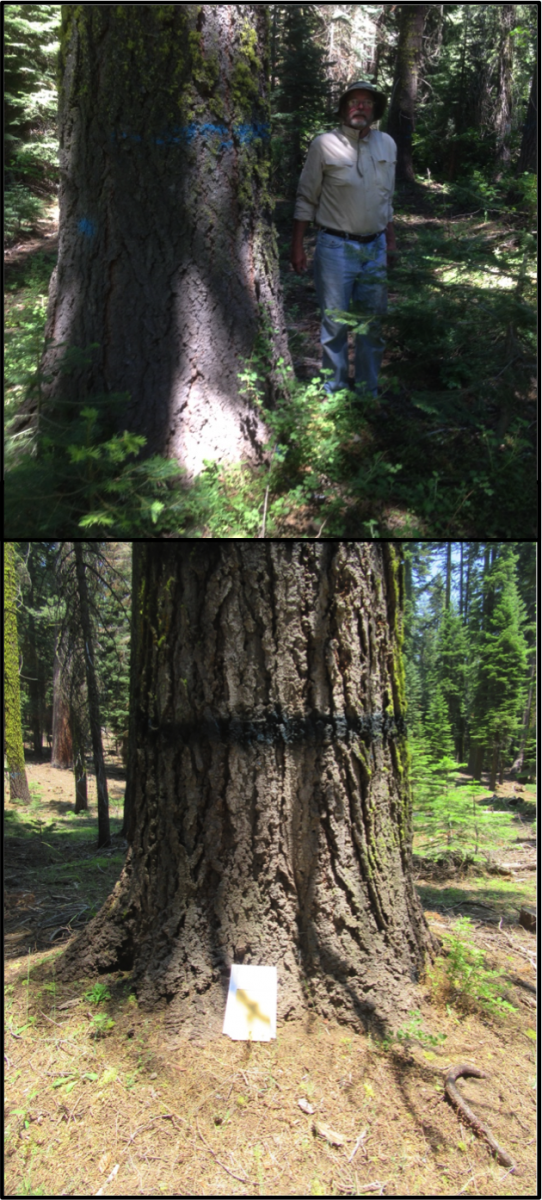
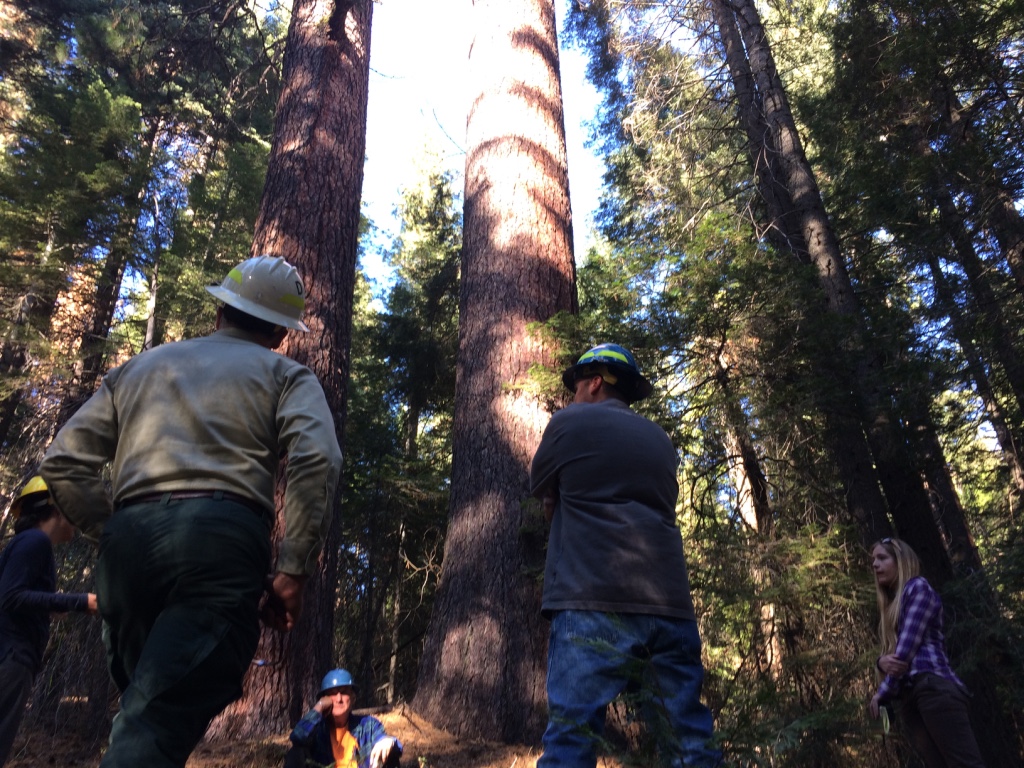
The work to protect remaining old growth stands continues
Due to the most recent drought and the ensuing outbreak of bark beetles that killed so many trees, a large percentage of old growth trees across the Sierra Nevada region ended up dying in the past decade. They already were far fewer in number than would ever occur naturally in this rich forest ecosystem. But now, under the current political administration and with so much pressure on the agency to maximize wood production, agency policies that currently protect large, old growth trees are highly vulnerable to being weakened or eliminated.
CSERC continues to work through forest stakeholder groups, in project planning projects, and with watchdog monitoring to be a strong dedicated voice for saving old growth trees. Precious, giant, old trees are a legacy to be passed along to future generations.

